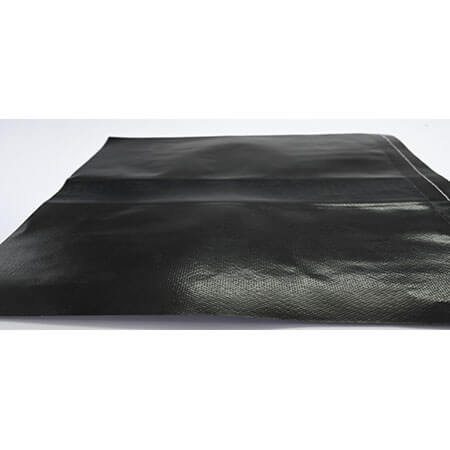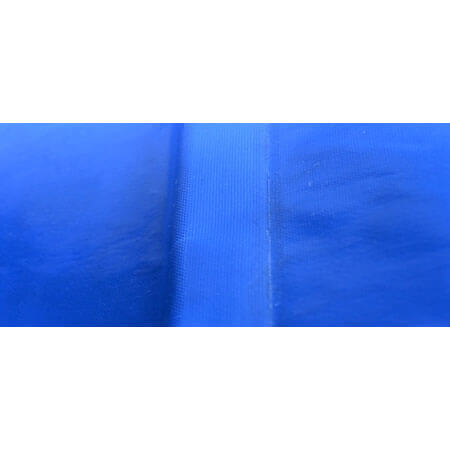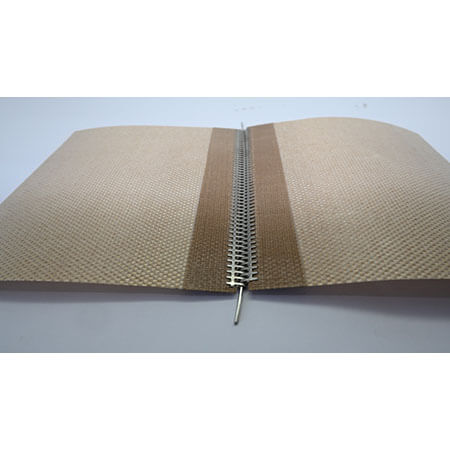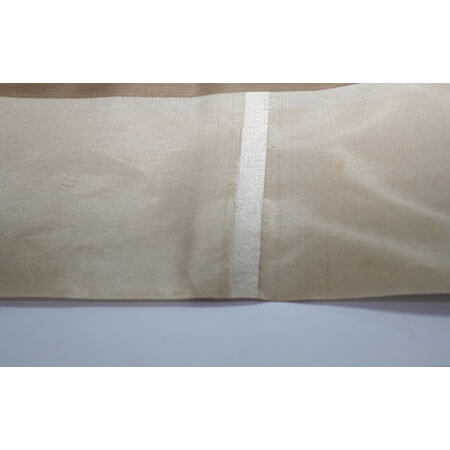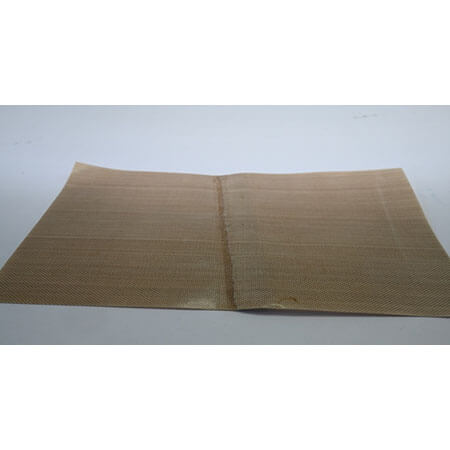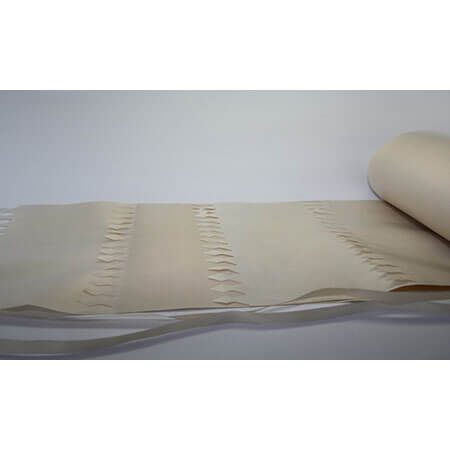Edge Skived Joint For Ultra Smooth Conveyoring
We are dedicated to delivering advanced conveyor solutions that enhance efficiency and streamline operations. We are proud to offer the Edge Skived Joint For Ultra Smooth Conveyoring, a cutting-edge innovation designed by our expert team. As a top-tier manufacturer and supplier, our focus is on providing products that set industry standards. The engineered to provide seamless belt integration. By precisely skiving the edges of the conveyor belt, the joint area becomes significantly thinner, reducing the profile and minimizing disruptions as the belt passes over conveyor components. This innovative design results in a smoother running surface, ideal for applications requiring high precision and minimal vibration.
Edge Skived Joint For Ultra Smooth Conveyoring
Model - Edge reinforcement - Film Edging
Edging reinforcement and Tracking types
GCTC provide most of kinds of processing solutions to strengthen the edge of the conveyor belt, mainly to provide the anti-resistance feature and service life time of the belt. The most common way is to use a Teflon film to cover the edge for 1- inch width, and then place under the laminating machine with high temperature and pressure to cover the edge perfectly. Alternative way is using a piece of glass Fiber fabrics sewing onto the edges. To prevent direction shift t you can choose Kevlar or silicone rope to form the guide rope and sew it at a distance of 1/2" from the edge. This is a customized option. The following pictures and abbreviations are available for your reference.
Edge reinforcement - Teflon Glass Fabric Edging

Tracking Kevlar Rope

Silicone Tracking Rope

Tracking Eyelet
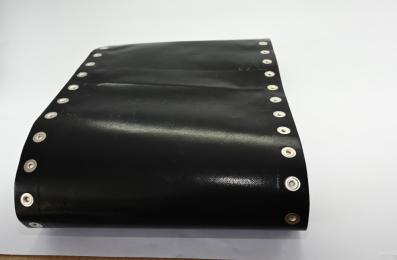
GCTC provide most of kinds of processing solutions to strengthen the edge of the conveyor belt, mainly to provide the anti-resistance feature and service life time of the belt. The most common way is to use a Teflon film to cover the edge for 1- inch width, and then place under the laminating machine with high temperature and pressure to cover the edge perfectly. Alternative way is using a piece of glass Fiber fabrics sewing onto the edges. To prevent direction shift t you can choose Kevlar or silicone rope to form the guide rope and sew it at a distance of 1/2" from the edge. This is a customized option. The following pictures and abbreviations are available for your reference.
Edge reinforcement - Teflon Glass Fabric Edging

Tracking Kevlar Rope

Silicone Tracking Rope

Tracking Eyelet

Our edge skived joints are meticulously crafted to ensure that each conveyor belt offers unmatched smoothness and reliability. This technology not only extends the belt's lifespan by reducing wear at the joints but also enhances the overall efficiency of the conveyoring system. Industries such as electronics manufacturing, pharmaceuticals, and food processing, where even minor irregularities can lead to product damage or processing errors, will find this technology particularly beneficial. We understand that each industry's needs are unique. That's why our
We ensure that our
Edge Skived Joint For Ultra Smooth Conveyoring
is fully customizable. We offer various skiving profiles and joint configurations to suit different conveyor setups and operational requirements. Our team works closely with clients to tailor solutions that integrate seamlessly into existing systems, ensuring optimal performance and user satisfaction.We ensure that our
Edge Skived Joint For Ultra Smooth Conveyoring
solutions are accessible to a wide range of industries around the world. Our commitment to excellence goes beyond product delivery; we provide comprehensive support services, including professional installation, routine maintenance, and ongoing technical assistance. Our dedicated support team is always ready to help you maximize the efficiency of your conveyor system. Opt for the enhance your operational capabilities. With our advanced engineering, commitment to quality, and dedicated customer support, we deliver solutions that redefine what's possible in conveyoring technology. Trust our expertise to provide you with a conveyor belt solution that ensures ultra-smooth operation and superior performance.Enquiry Now
Products List
Joining methods for Teflon Conveyor belts & power transmission belts
The fabric ends are cut in a finger pattern, matched together, then hot pressed. With this kind of joint, the weld length is decisive for the tensile strength. The joint part is quite flat, and it has a good result in the transporting article that require a flat joint. Application industries including apparel fusion machines, food conveyors (ex. egg crust, Mexican crust pre-cooking automation equipment), electronic parts, etc.
Joining methods for Teflon Conveyor belts & power transmission belts
The ends of the fabric are skived to a wedge shape, one end of the belt from the top, the other from the underside, and bonded together using PFA film, heat and pressure. This is a very strong welding method, and offer a very smooth transition for the product to run on the machine.
Joining methods for Teflon Conveyor belts & power transmission belts
Mechanical fasteners join or fasten two objects together mechanically. They are used in places where conveyor belts must be changed regularly or for applications where the belt needs to be replaced quickly. However, the mechanical fastener is a vulnerable part of the belt and may have openings where dirt can enter, so this is not a preferred solution for many applications.
Joining methods for Teflon Conveyor belts & power transmission belts
Butt joint is made by placing the two ends of a belt together and applying a certain wide piece of material underneath. This is then welded together ensuring the top surface is neat. Butt Belt Joints tend to be manufactured prior to fitting on the machine and are manufactured using a strap on the underside to offer additional strength. This method is a simple but very effective on making a belt endless at customer’s site. In the meantime, it can be an idea for machine isn’t easy to unassembled for belt replacement.
Joining methods for Teflon Conveyor belts & power transmission belts
With pre-inserted staples and a one-piece strip design, which Hinged and Stapled Fasteners makes splicing quick and easy (allows for quicker installation and easy change). The joint portion is flexible and it is made with special plastic material which allows you to use it in a certain high temperature environment, please contact us for more details.
Joining methods for Teflon Conveyor belts & power transmission belts
A castellated joint is made by creating interlocking loops from PTFE coated Kevlar materials. The two ends can then be connected together with a metal or peek pin. This method is easy to install on the machine while it has a feature of more flat than spiral peek joint method.
Joining methods for Teflon Conveyor belts & power transmission belts
Overlap Belt Joints – Overlap joints are a simple and easy joint to use where having an even surface is not critical. Overlap splices are the most popular type used in the industry and can be enhanced with molding for food processing applications. Overlap ranges from 25 mm to 140mm, with directional belt angles of 30, 45, 60, and 90 degrees. This type of joint can easy be made on a machine where the belt needs to be fitted onsite.
Joining methods for Teflon Conveyor belts & power transmission belts
We recommend the overlapped finger joint. As in this case, the ends to be joined are split into layers. Next, fingers are punched into the ends, which are then tacked together and welded under pressure and heat into an endless belt.
Again, the double-layer fabric is applied from the beginning to the end, using high temperature and pressure, so the tensile strength of the belt will be improved and it is especially suitable for conveyors with small wheel diameters, such as continuous sealing machinery and toilet paper packaging machinery.
 English
English Français
Français Deutsch
Deutsch Русский
Русский Português
Português Italiano
Italiano हिन्दी
हिन्दी Español
Español Nederlandse
Nederlandse العربية
العربية Tiếng Việt
Tiếng Việt ภาษาไทย
ภาษาไทย Bahasa Indonesia
Bahasa Indonesia বাঙ্গালী
বাঙ্গালী Türk
Türk 繁體中文
繁體中文
